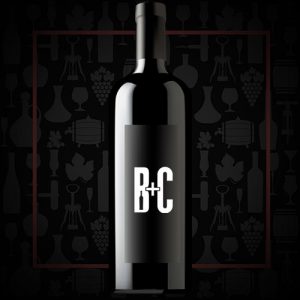Cellar Profile
In the mid 1700s, Bernardin Charrère moved from the Haute Savoie in Southeast France to the Aosta Valley and established Les Crêtes, a mill and farm in Aymavilles. This was in the middle of the 21 square mile Aosta Valley, in the heart of the wine region. In 1810, the family planted 2 hectares of vinifera grapes and the winery was born. The family still continues to craft wines from those vineyards to this day. Les Crêtes is the largest privately-owned winery in the region, but would be considered “boutique” in most other regions around the world. It has been at the forefront of searching out rare, indigenous vinifera varieties and helping protect them from extinction. Grapes like Prie Rouge, Mayolet, Cornalin, Premetta and Fumin exist nowhere else in the world and Les Crêtes, along with the rest of the tiny vignerons in the region, has worked with the Italian government to preserve them. This is one of the most challenging regions on earth to work for wine, with non-contiguous vineyards frequently planted on ledges on the side of steep Alpine mountains where they can find a little sandy soil. Hot summer days and extremely cool nights, coupled with a dry growing season allow for some of the longest hang times on earth. Les Crêtes has consistently been recognized as the finest producer in the region and a destination spot for wine lovers. Their wines are powerful, yet elegant, with their trademark salty minerality – a true representation of the terroir of the Val d’Aosta.
Region
Surrounded by the Alps, the Valle d’Aosta is home to the highest elevated vineyards in all of Europe. The region is divided into three main vineyard areas: the upper valley,Valdigne; the central valley; and the lower valley. Most vineyards in the Aosta Valley occupy the steep, south-facing slopes above the Dora Baltea river, a tributary of the Po. The dramatic topography and diminutive size of the valley mean that the area available for viticulture is limited. Much of the valley floor, with its mineral-rich, well-watered soils, is simply too fertile for quality viticulture. As a result, most of the best vineyards here are on the lower slopes, and climb steadily up to top altitudes of around 1300m above sea level.
Vineyard
Small plantings on sandy soil carved out of mountain faces. These tiny Estate vineyards are old vine and must be heroically farmed by hand, using small boxes and pickers strapped in. The key to these cool-climate vineyards is exposure to the almost constant daytime sunlight, coupled with careful canopy management to provide proper shade in the hottest part of the day.
Varieties
Pinot Noir—chiefly associated with the Burgundy region of France— is grown around the world, mostly in cooler climates. The grape’s tendency to produce tightly-packed clusters makes it susceptible to several viticultural hazards involving rot that require diligent canopy management. When young, wines made from Pinot Noir tend to have red fruit aromas of cherries, raspberries and strawberries. As the wine ages, Pinot has the potential to develop more vegetal and earthy aromas that can contribute to the complexity of the wine. Thin skins and low levels of phenolic compounds lend Pinot to producing mostly lightly-coloured, medium-bodied and low-tannin wines that can often go through phases of uneven and unpredictable aging. The House of Savoy ruled the Aosta Valley for centuries, and brought their preferred varietals with them (Chardonnay, Pinot Noir, Syrah). Pinot Noir has been grown in the region for hundreds of years.
Winemaking
Hand-harvested at full phenolic ripeness, which is key for this finicky variety. Long, slow fermentation is followed by aging in stainless steel.
Tasting Notes
Bright and cheerful, the aromas burst from the glass: red cherry, wild berry, earth and a touch of herbaceousness. On the palate, the wine is medium-bodied with brilliant acidity. The red cherry replays, along with strawberry, sour raspberry, oregano and some red licorice notes. There are some tannins for balance, but they’re quite soft. Enjoy at cellar temperature with planked salmon.

 info@buyersandcellars.ca
www.buyersandcellars.ca
info@buyersandcellars.ca
www.buyersandcellars.ca